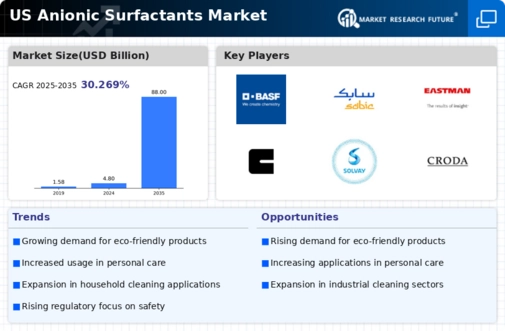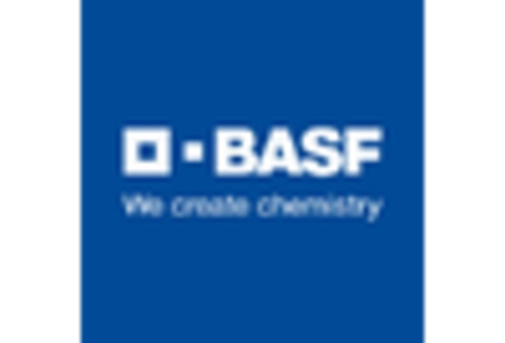The US Anionic Surfactants Market is characterized by a dynamic competitive landscape driven by innovations, strategic collaborations, and evolving consumer preferences. Anionic surfactants, known for their superior cleaning and emulsifying properties, find applications in various industries including personal care, household cleaning, and industrial cleaning.
As demand for sustainable and environmentally friendly products rises, manufacturers in this market are increasingly focusing on the development of bio-based and biodegradable surfactants to appeal to a more environmentally conscious consumer base. Competitive strategies also encompass cost management and optimizing supply chain efficiencies to secure a competitive edge in pricing, ultimately influencing market share among key players.
Ashland Global stands as a prominent player within the US Anionic Surfactants Market, recognized for its dedication to innovation and quality. The company leverages its extensive expertise in specialty chemicals, offering a variety of high-performance surfactants tailored for diverse applications. Ashland Global maintains a strong market presence due to its customer-centric approach and ability to provide customized solutions that meet specific industrial needs.
The strengths of Ashland lie in its robust research and development capabilities that facilitate the continuous introduction of novel products, its commitment to sustainability, and a diversified product portfolio that resonates well with consumer demands in the US. By continuously focusing on technical advancements, Ashland Global has solidified its position in the competitive landscape of anionic surfactants.
BASF holds a significant position in the US Anionic Surfactants Market, offering a broad portfolio of surfactants known for their effectiveness in cleaning and emulsification. The company emphasizes sustainability and innovation, developing key products that cater to a variety of applications in personal care, home care, and industrial sectors.
With a strong focus on research and development, BASF frequently launches new products that align with market trends and regulatory requirements. The company's strengths are amplified through strategic mergers and acquisitions, enhancing its capabilities and expanding its market reach.
This strategic positioning not only strengthens BASF's market presence but also allows for a comprehensive service offering that boosts customer satisfaction. Through its emphasis on sustainable solutions and innovative product development, BASF continues to reinforce its competitive advantage in the US Anionic Surfactants Market.


















Leave a Comment